
Lexington’s African American Heritage Walking Tour
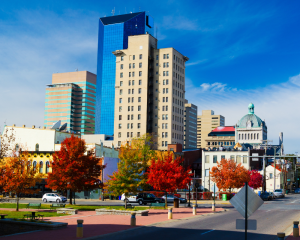
Join us for an on-demand walking tour of Downtown Lexington’s African American heritage sites.

Join us for an on-demand walking tour of Downtown Lexington’s African American heritage sites.

Explore topics related to Science, Technology, Engineering, Art, and Math (STEAM) in this space for youth, grades 3-12.
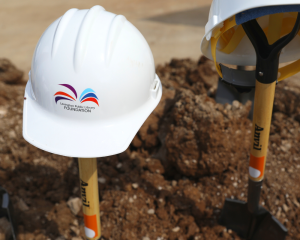
Learn how the Lexington Public Library Foundation empowers change within our library system.

Learn or develop a personal or professional skill with LinkedIn Learning classes, available for free with your library card.

Did you know physical materials renew automatically if they don’t have a waiting list? Check your account online to see the status of your items.

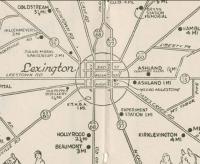
The Kentucky Room's collections contain Lexington's residential directories going back over 200 years, and are some of the most useful resources for researchers looking for family information, neighborhood histories, and house histories.
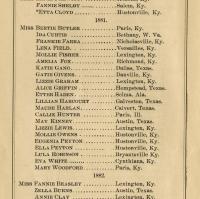
The library has a variety of directories and yearbooks with local information. In the library's current digital collection, there is a selection of residential and street directories, yearbooks, school directories, and organizational directories. These are all fully word-searchable.
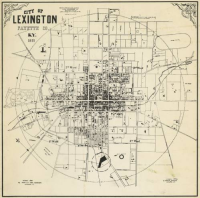
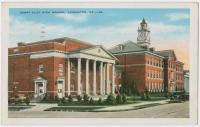
Lexington's school system dates back to the city charter of 1831, and it first school opened in 1834. From a single building in 1834 with about 100 students, today the Fayette County Public School system has over 40,000 students and 68 schools and programs. Lexington and Fayette County combined districts in 1968, shortly before the city/county government merger in 1974.
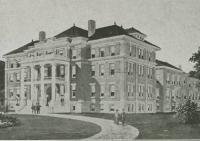
Fayette County's buildings contain a great deal of history about the region and its inhabitants.
The Old Kentucky Architecture book by Rexford Newcomb (1940) contains images, details, and some architectural layouts from all around Kentucky, but the Lexington properties include Llangollen (the Dr. John C. Lewis House), the Benjamin Gratz House, Rose Hill, Hopemont, Eothan, Ashland, Mansfield, Helm Place, Carrick House at Whitehall, Morrison College at Transylvania University, the tomb of Gideon Shryock's father Matthew at the Old Episcopal Burying Grounds, Ingleside (listed here as Ingelside), Loudoun House, Botherum, Walnut Hill Church, and the Sexton's Cottage at the Old Episcopal Burying Grounds.
The Court-Houses of Lexington by J. Winston Coleman, Jr. (1937) contains photos and history of Fayette County's four courthouses.
The Illustrated Lexington (1919) has a variety of images, but included are some exterior and interior photographs of downtown Lexington businesses and houses.
Bluegrass Houses and Their Traditions by Elizabeth M. Simpson (1932) contains photos of various Fayette and surrouding county properties, with descriptions of the families, buildings, and contents. The properties include Glendower, Castleton, Eothan, Idle Hour, Maxwell Place, Winton, Elmendorf, Clingendaal, Morrison College, La Chaumiere du Prairie, Scarlet Gate, the Meadows, Lindenhouse, Belair, Mount Brilliant, Coldstream, Hopemont, Bodley House, Roberts House, Woodburn House, Botherum, Greentree, Ingleside, Loudoun, Thorn Hill, Rose Hill (Buckner), Elmwood, Sycamore Park, Walnut Hall, Edwards House, Patchen Wilkes, Hurricane Hall, Forkland, the Old Keen Place, Xalapa, the Ward Place, Calumet, Dunreath, Kilmore, Alleghan Hall, Sumner’s Forest, Stoneley, Rose Hill (Talbert), Helm Place, Castlelawn, Dixiana, Bryan Station, Poplar Hill, Mansfield, Fowler’s Garden, Mount Hope, Hollyrood, and Ashland.
Gratz Park (1983) contains illustrations and brief descriptions of the buildings and features of Gratz Park in downtown Lexington.
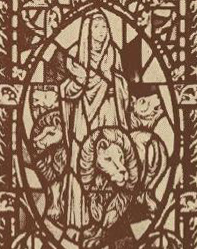
Fayette County churches contain some of the earliest records and information preserved about central Kentucky history. The digital archive contents include church ledgers, minutes, directories, and informational brochures.
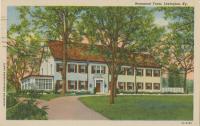
The Fayette County Postcard collection contains images of well-known sites in Central Kentucky, such as Keeneland, Transylvania University, Ashland, and many others. The 80 images provide an interesting perspective of Lexington architecture, industry, and culture in the early 20th Century.
Description coming soon.
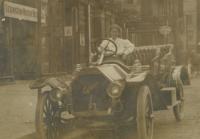
Fayette County, Kentucky, has changed enormously since it was created in 1792. This collection contains government documents for the city of Lexington, for Fayette County, and for the merged Lexington-Fayette Urban County Government, as well as funeral notices, club directories, scrapbooks, image collections and a history of Lexington Public Library.
We are committed to supporting our democracy by providing nonpartisan voting information, whether you choose to cast an early ballot or go to the polls on Election Day.
The Lexington Public Library’s Digital Archives provide open access to researchers and students to learn more about the rich history of Lexington and Fayette County. It contains a fraction of the Library’s physical holdings, which are housed and available for reference in the Kentucky Room at the Central Library. New material is being digitized and added constantly, so there's always something new to find.
The archives have a simple keyword search, and it is possible to browse the collections by subject, area, or decade. The Lexington Public Library actively reviews and labels materials in our archives with statements that indicate how you may reuse the images, and what sort of permission, if any, you need to do so. Please check the information for each image to determine its legal status.
Thanks for your interest in joining the Lexington Public Library! Your library card is the key to checking out books, downloading audiobooks, taking online classes, and much more. Please check here to find out if you qualify for a library card and how to apply.